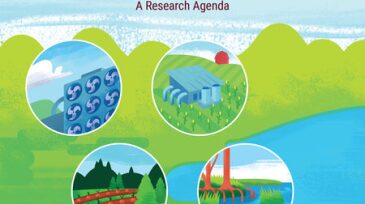Carbon capture and storage
Regulators pull from experiences in the oil and gas industry to define best stewardship practices for the nascent CCS industry.
EERC CEO Charles Gorecki outlines how applied research in North Dakota is helping improve oil recovery, reduce emissions, and advance carbon storage.
This article is the fifth in a Q&A series from the SPE Research and Development Technical Section focusing on emerging energy technologies. In this edition, Shantanu Agarwal, founder and CEO of Mati Carbon, discusses how the company’s approach to carbon removal led to winning the Musk Foundation’s XPRIZE in 2025.
-
Some of these technologies can be deployed now, but additional ones are needed to meet climate goals.
-
A new analysis looks at what it would take for oil companies to start pumping millions of tons of carbon dioxide into their wells to boost crude production and what it would mean for the climate.
-
Even with the wealth of experience already in place within the oil and gas industry, the obstacles to advancing CCS to the forefront of greenhouse gas mitigation technologies remain significant.
-
Natural gas, coupled with carbon capture and storage (CCS), could provide cheap and reliable energy in the long term and mitigate climate change. Gas-to-wire (GTW) generates electricity from natural gas at or near the field. This study applies an integrated GTW/CCS scheme to a gas-production field.
-
Collaboration is critical to achieving recognition of the scope and value of carbon capture and storage and achieving acceptance for specific projects.
-
A carbon capture and storage (CCS) white knight has appeared on the horizon, and it is potentially a game changer. The US Congress has considerably expanded what was a modest and limited tax credit for CCS into something meaningful that ought to accelerate deployment of the technology.
-
Inventys is receiving $2.6 million from Natural Resources Canada through its Energy Innovation Program to support the development of a 30-tonne-per-day carbon-dioxide-capture pilot plant at Husky Energy’s Pikes Peak South Lloyd thermal project.
-
KBR announced it has been awarded the Concept and front-end-engineering-and-design contract by Statoil for its ground-breaking Northern Lights project to develop an onshore carbon dioxide storage terminal in Norway.
-
A subcommittee of the SPE Carbon Dioxide Capture, Utilization, and Storage Technical Section has published the Carbon Dioxide Storage Resources Management System document, which establishes technically based capacity and resources evaluation standards.
-
In the world of carbon capture, utilization, and storage technology, utilization is the driving factor. Three experts discussed the motivations, limitations, and challenges of CCUS at a dinner held by the Society of Petroleum Engineers CCUS Technical Section at SPE’s annual meeting.













